Unravel the Strange Elephants:
Fascinating Facts You Didn't Know!
Elephants are the largest land animals on Earth, but did you know that they also have the longest-lasting memory?
or that they exhibit a tremendous level of empathy while grieving the loss of loved ones?
These gentle giants can also communicate across great distances via infrasound, an inaudible low-frequency sound.
Elephant herds have a matriarchal structure, with the eldest female in leadership.
Herds are primarily made up of female family members and young calves.
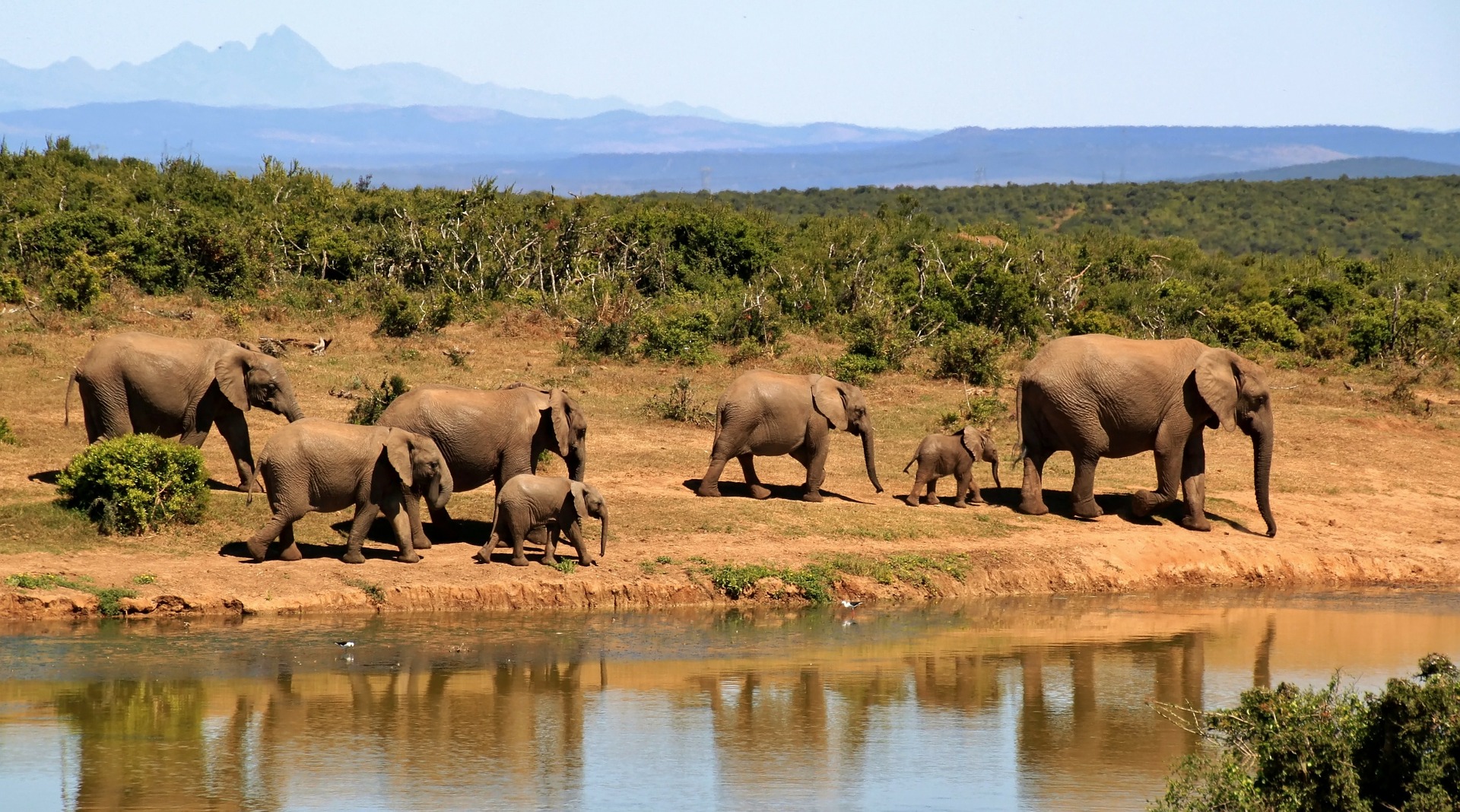
The older females of an elephant herd are the ones that will decide what the herd does.
The matriarch relies on her knowledge and memory to remember the best places to find food and water.
The bonds among member of elephant herds are so strong
that they are believed to mourn for their dead.
Elephants are also concerned about the well-being of all members of their herd and will do everything in their power to care for and protect weak or injured individuals.
How do you tell the difference between a fake elephant charge and a serious charge?
Each elephant has a distinctive character, so it is not always possible to generalize about the difference between serious and mock charges.
A lot of this activity initially involves displays of mock threats of bravery.
Most animals will take notice of these threatening displays and take the necessary evasion action.
Males are more aggressive during their must periods.
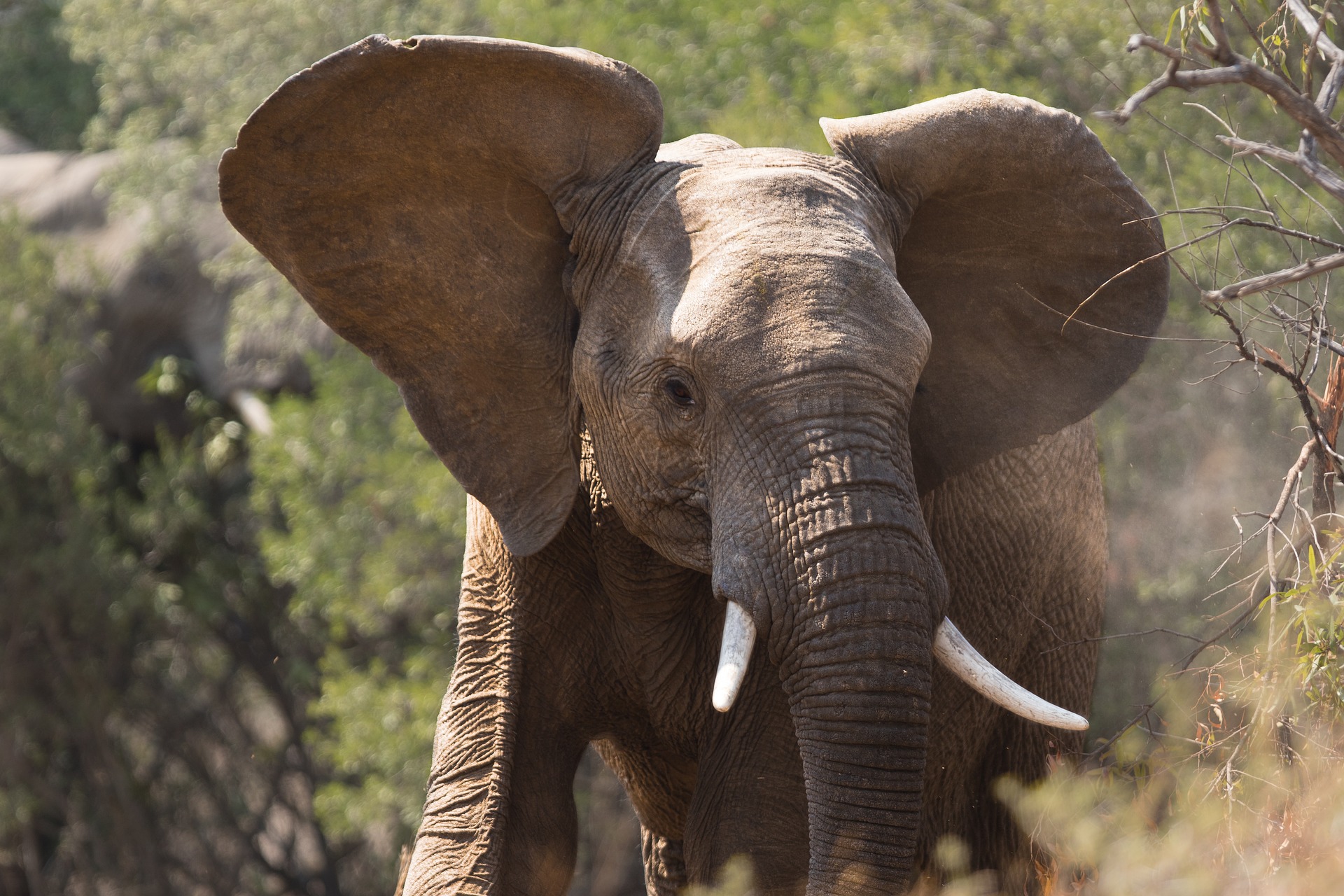
In a serious charge, the ears are held back against the neck, and the trunk is tucked up against the chin.
Most charges are stopped before the target is reached.
If an elephant follows an attack, it can kill a large rhino or even a hippo.
They also easily wreck a vehicle when you are on an African safari, so please remember theso, warning signs.
Elephant body language
The tail of an elephant is an important indicator to understanding elephant body language. The tail of a relaxed elephant swings from side to side.
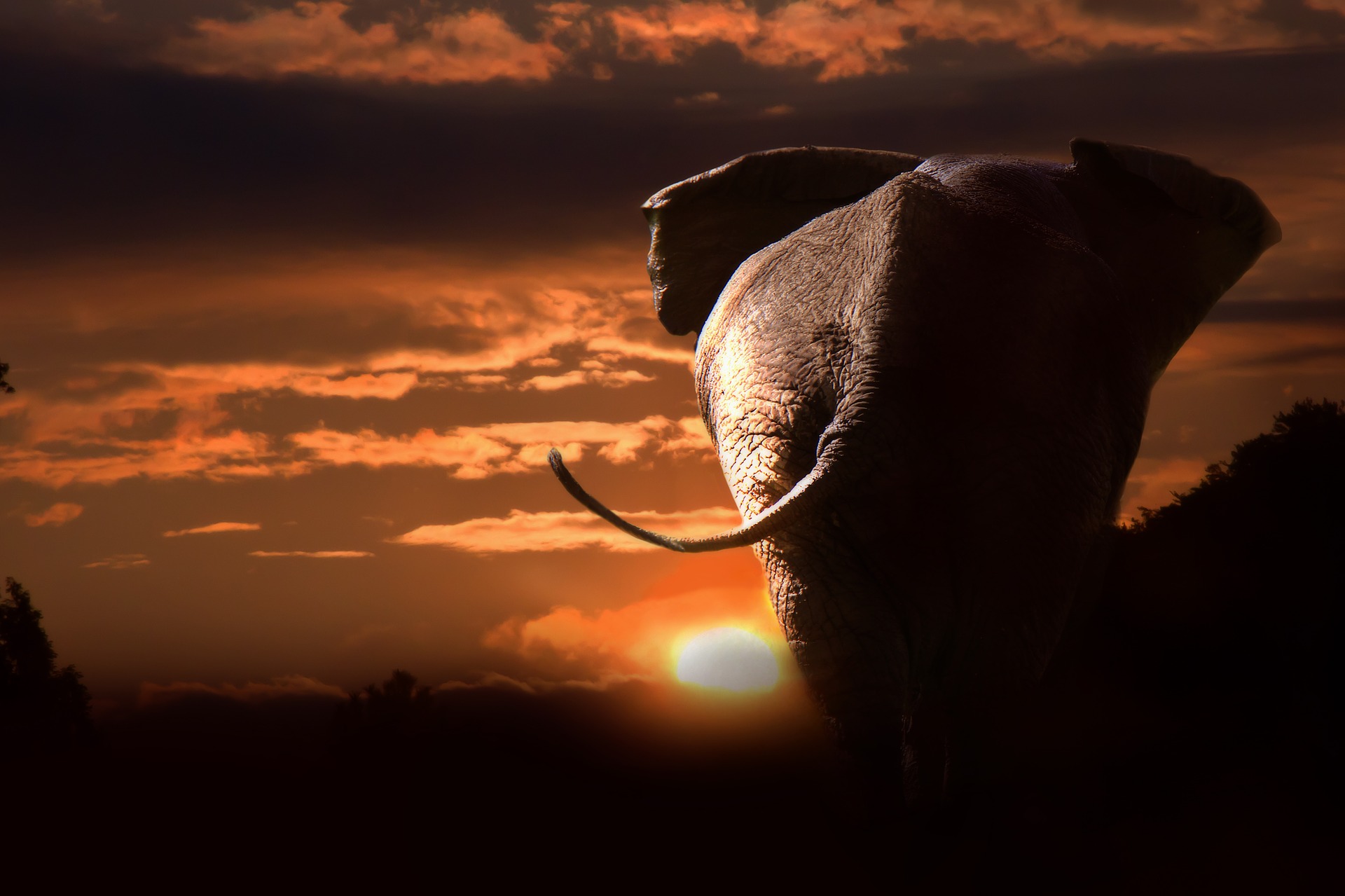
The tail of a restless elephant will be held still, often pointing downward. The tail of a distressed or irritated elephant will be held out in a rigid way.
An irate elephant will normally first mock charge. This usually involves a lot of ear flapping, head shaking, and loud trumpeting.
How fast can an elephant run?
|
At top speed, an elephant can travel at 25 miles per hour (40 km per hour).
However, their biggest asset is not their speed. Their primary defense is their sheer bulk, tusks, and trunk, as well as their strength in numbers. Adult elephants have no enemies except humans. |
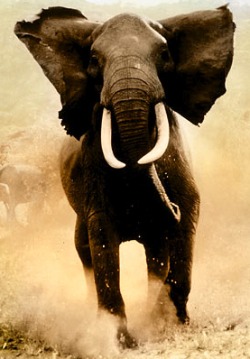 |
Do elephants have good memories?
Elephant facts indicate that they seem to have one of the best memories of all animals.
The long lifespan of elephants does require that they have a good memory.
There is proof that elephants have recognized urine samples from group members they had been separated from for a few decades.
This good memory is beneficial for survival when knowledge about where to find food, water and security is especially useful during extreme climatic cycles.
Did you know an elephant's height can be estimated from the size of its footprint?
From the footprint of an elephant, it is possible to determine its height.
For males shoulder height is approximately 5.8 time the length of the hind footprint (and in the case of females, 5,5 times).
An elephant’s foot measures 40 - 50 centimeters in length and width and has a circumference of about 1.34 meters.

The footprint can also indicate the age of an elephant.
Younger elephants leave a more defined footprint than older elephants, which might have smoother ridges and well-worn heels.
All mammals can be divided into diverse groups based on their foot posture while standing.
Elephants fall into a group called near-ungulates, which refers to the fact that they have toenails rather than hooves.
An elephant's foot is designed in such a way that elephants walk on the tips of their toes.
African elephants have 4 nails on their front feet and 3 nails on their back feet.
These nails are worn down and do not always show on their footprints.
The sole of the foot is covered in a thick epidermal layer tissue that acts like shock absorbers.
This allows the elephant to move surprisingly silently.
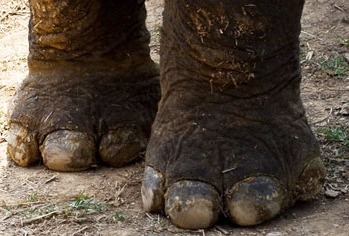
The ridges and grooves give it a good grip and some stability when walking over a variety of terrain.
The reason that elephants can walk so quietly is in part due to the fibro elastic layer providing a spongy cushion on the bottom of the foot.
This allows the foot to mould over objects on the ground, thereby effectively smothering the objects beneath it.
Elephants can also hear sounds with their feet, which can detect low-frequency rumbles from other animals up to twenty miles away.
How do African elephants sleep?
African elephants can sleep standing up for a few minutes at a stretch, but they do lie down to sleep more deeply.
They even snore at times.
They will also lie down in the heat of the day for an hour or two.
Elephants lie down to rest or sleep deeply, as these calves are doing. Entire herds can sometimes be seen lying flat in this way.
Elephants often doze while standing during the heat of the day. They will spend a few hours every night lying down and sleeping soundly.
Some elephants are snorers. When they are dreaming, they may make vocalizations.
Elephant babies often lie in the shade of their mothers and members of the herd.
Elephants get a mere two hours of shut-eye per night.
These animals may be especially restless because they must be on high alert for poachers. Elephants in captivity sleep longer.
Can elephants swim?
Elephants enjoy showering by sucking water into their trunks and spraying it all over themselves.
Afterward, they often spray their skin with a protective coating of dust.
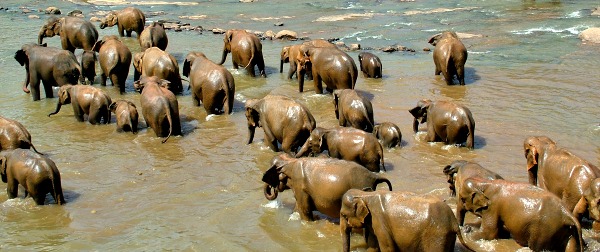
An elephant can go to the water once a day to drink, bathe, and wallow in mud. On average, an elephant will drink 70 to 90 liters a day, but it can down 150 liters when thirsty.
Wallowing in mud is an important activity for elephants. It cools them off, and it protects their skin against parasites.
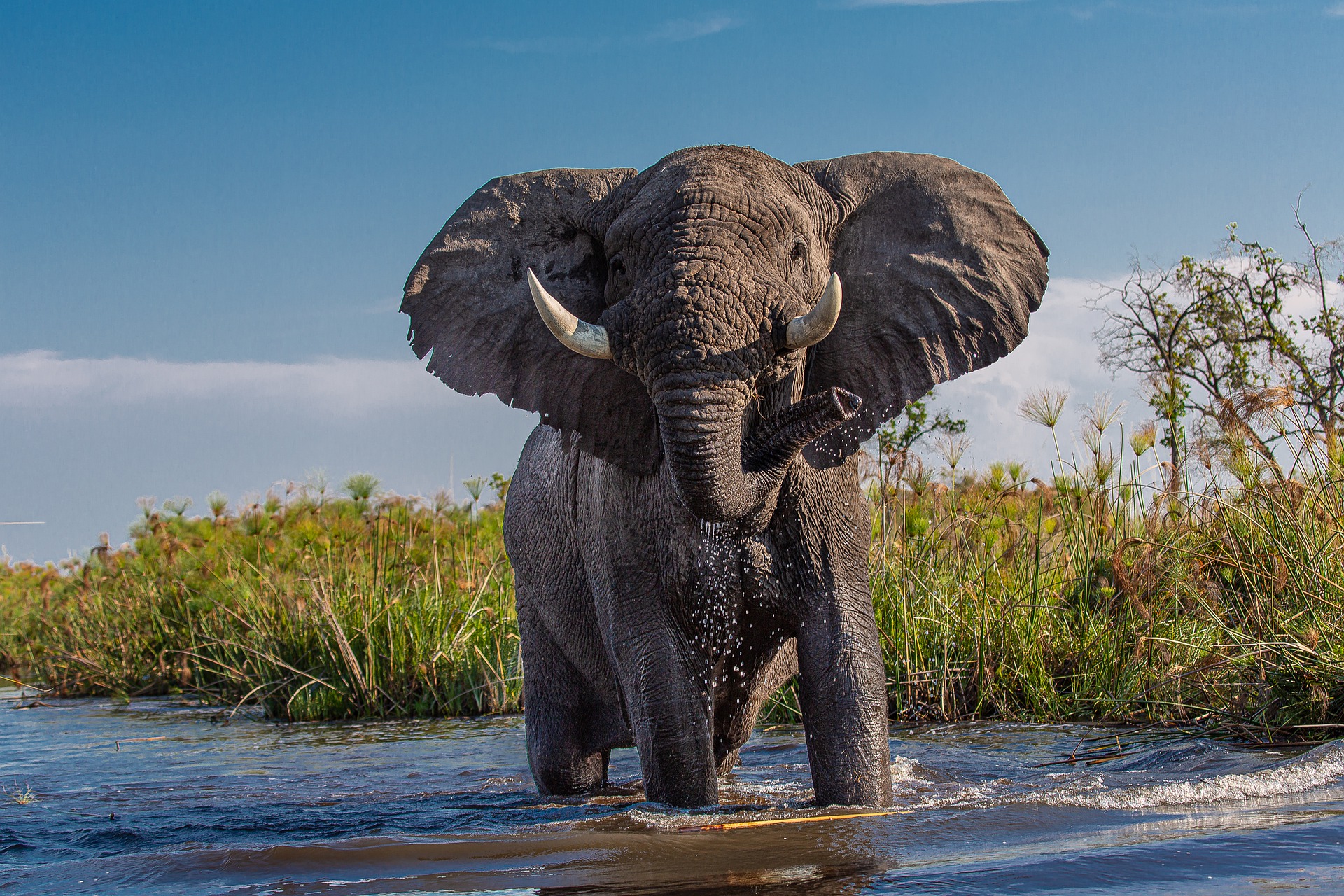
In deep water an elephant will immerse itself completely. Elephants can swim across lakes and rivers with only the tip of their trunks showing.
Elephants shower themselves with dust and sand for the same reasons. Sand also acts as a useful substance to help dislodge ticks when the elephant rubs itself on rocks and trees.
What do elephants eat?
Elephants eat a very wide variety of plants.
In summer grass forms the bulk of their diet, replaced in winter by woody plants.
As their cheek teeth are worn away, they are replaced by a series of six rows of teeth in each jaw.
Once the sixth row of teeth is worn away the elephant cannot chew its food properly anymore, and it slowly starves to death.
Elephants are not fussy about what they browse.
They can often be seen shaking trees to allow fruit and seed to drop on the ground for food that is ttoofar to reach with their trunks.
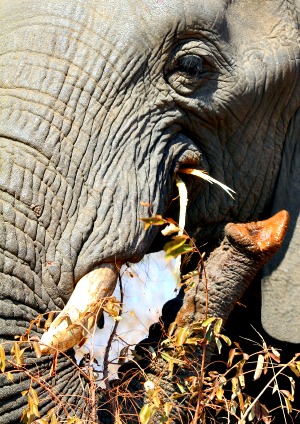
African elephants can be destructive to habitat when their numbers are not managed effectively.
Conclusion
From their unique trunks to their complex social structures, elephants have an array of surprising characteristics and behaviors that make them truly remarkable.
Like this page?
You may also be interested in --
- Is there really such a thing such as African elephant graveyards?
- What are the differences between the African and Asian species
- What are the tusks and the trunk used for?
- How dangerous is a charging elephant?

